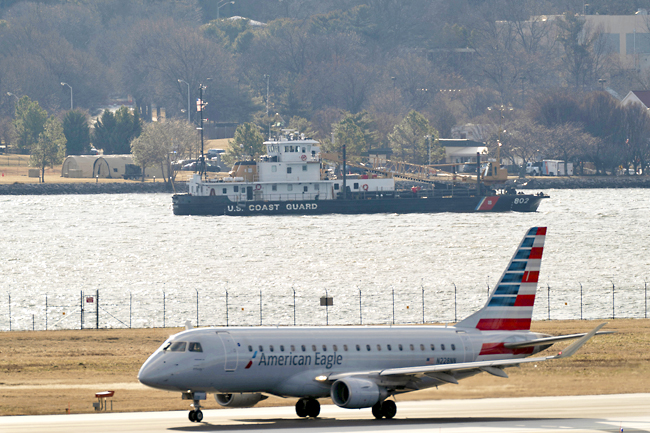ARLINGTON (AP) – Preliminary data from the deadliest United States (US) aviation accident in nearly 25 years showed conflicting readings about the altitudes of an airliner and Army helicopter when they collided near Reagan National Airport in Washington, killing everyone aboard both aircraft, investigators said.
Investigators also said that about a second before impact, the jet’s flight recorder showed a change in its pitch.
But they did not say whether that change in angle meant that pilots were trying to perform an evasive manoeuvre to avoid the crash.
Data from the jet’s flight recorder showed its altitude as 99 metres (m), plus or minus 7.6m, when the crash happened on Wednesday night, National Transportation Safety Board (NTSB) officials told reporters. Data in the control tower, though, showed the Black Hawk helicopter at 61m at the time.
The roughly 30m discrepancy has yet to be explained.
Investigators hope to reconcile the altitude differences with data from the helicopter’s black box, which is taking more time to retrieve because it became waterlogged after it plunged into the Potomac River. They also said they plan to refine the tower data, which can be less reliable.
“That’s what our job is, to figure that out,” said NTSB member Todd Inman, who grew increasingly agitated with reporters’ questions seeking more information and clarity about the readings during a Saturday evening news conference.

He acknowledged that there was dissension within the investigative team about whether to release the information or wait until they had more data. Officials said the helicopter’s maximum allowed altitude at the time was 61m.
No one survived the collision, which occurred as an American Airlines flight from Wichita, Kansas, with 64 people on board was preparing to land at Ronald Reagan National Airport, just across the Potomac from the capital. The Army Black Hawk helicopter, which apparently flew into the jet’s path, had three soldiers on board.
“This is a complex investigation,” said NTSB investigator in charge Brice Banning.
“There are a lot of pieces here. Our team is working hard to gather this data.”
Banning also discussed the last moments from the jet’s two black boxes, which captured sound in the cockpit and flight data.
“The crew had a verbal reaction,” Banning said, with the data recorder showing “the airplane beginning to increase its pitch. Sounds of impact were audible about one second later, followed by the end of the recording”.
Inman expressed frustration, too, that accidents like these occur, noting that the board has made “several hundred” recommendations to improve aviation that have not been acted upon.
“From tragedy we draw knowledge to improve the safety for us all. That’s what we’re doing right now, we’re dealing with tragedy, but we need to improve safety,” he said.
“You want to do something about it? Adopt the recommendation of the NTSB. You’ll save lives,” he said, adding that he has spent hours with victims’ families since the crash. “I don’t want to have to meet with those parents like that again.”



